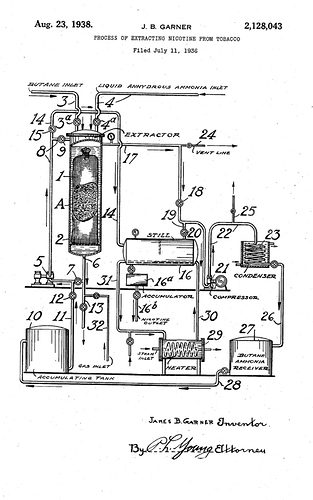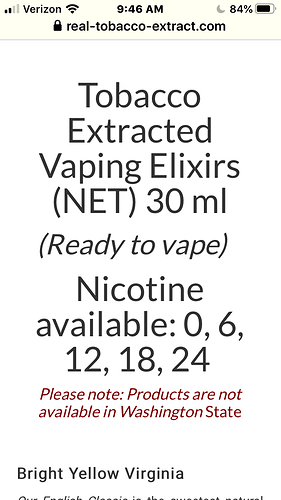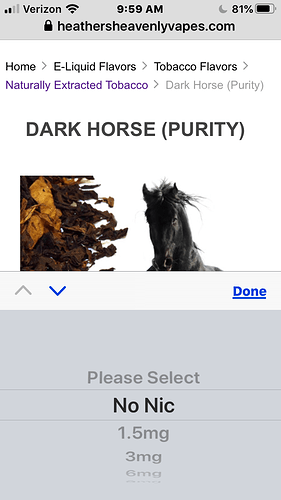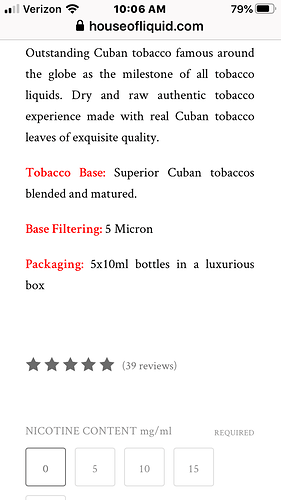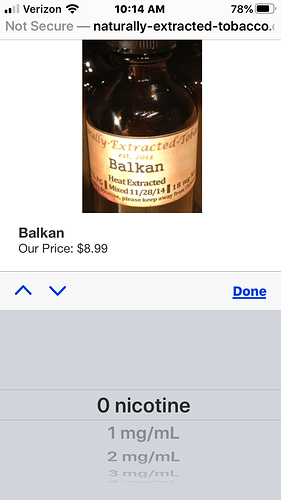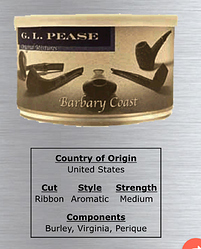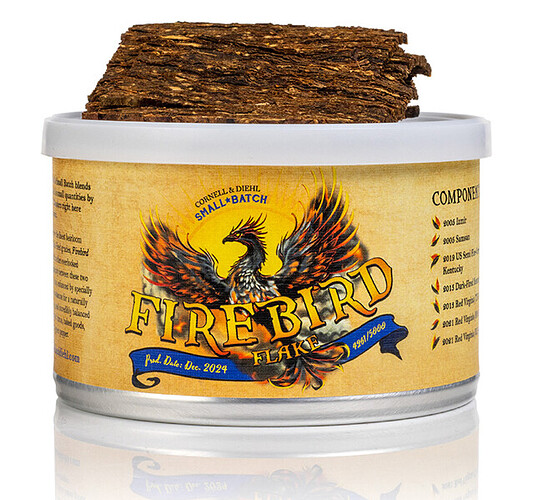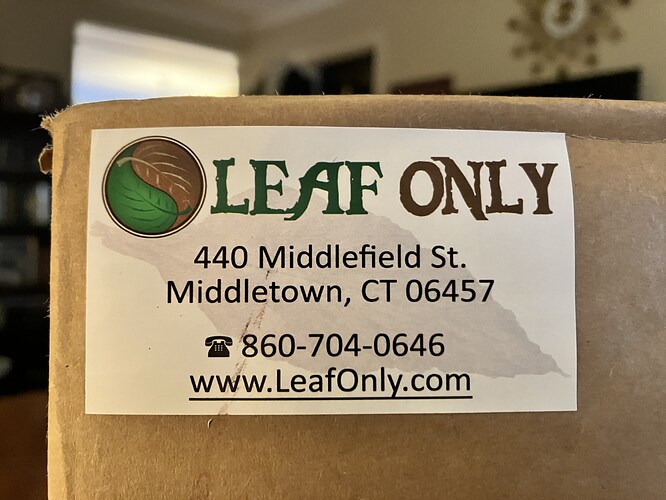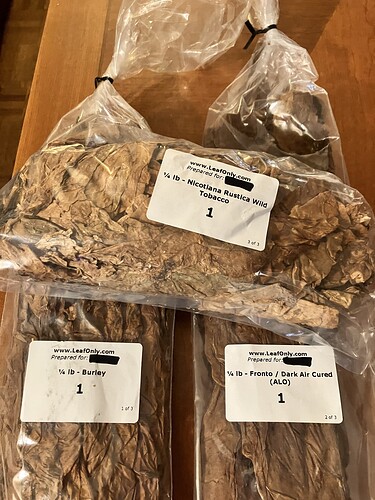After ~7 weeks of room temperature maceration (only) of 1 Oz of C&D Red Virginia Ribbon in 200 mL of PG (split into two small mason jars), the aroma of the extract is distinctly “hay-like” (and not particularly inspiring) - as opposed to Kinnikinnick’s (and my own initial previously performed) ~8 Hours warming (at ~125 *F) followed by ~4 weeks, both of which have a distinctly pleasant and rather interesting “fruity” aroma. Will be (more objectively than so far) comparing taste-results in a small RDA allowing flavor comparisons. In this (C&D RVR) case, it seems that the ~125 *F initial warming phase is (probably) a desirable procedure - with or without any possible decompositions/reactions. Perhaps a somewhat lower warming temperature for a somewhat longer warming time might be in order (in an attempt to address above temperature concerns) ?
I’m of the opinion, the warming procedure aids in releasing certain quality characteristics of the leaf, which are otherwise left undiscovered using a room temperature maceration process. But, to each their own… ![]()
Hmmm. I’m pondering the juxtaposition of the following related comments posted by 50YearsofCigars:
“Reactions” that would evolve the heat that I had described - but not a statement of “no chemical reactions”.
The situation (surrounding advisable maximum heating-phase temperatures) being complex, and potentially different for various tobaccos, perhaps 110 *F (maximum sustained) is an advisable (conservative) limit ? It would be nice (if it may be possible, via either theoretical and/or empirical means) to arrive at a particular (deemed “safer”) temperature multiplied by time duration product to work with and apply (for each tobacco blend, etc). Perhaps leaf-bits “scald” (in their own sort of way) as temperature approaches 120 *F … ![]()
As mentioned, leaf-bits (in PG) seem to become a bit “crispy in texture” for the first few hours (at ~125 *F).
Hats off to GL Pease “Haddo’s Delight” ! It (with just a touch of White Burley along with Virginia base, fairly strong Perique, and a touch of Cavendish) has been the item to add to my “Triton” blend of NETs extracted from three individual pipe-tobacco blends. Thank you kindly for the reference ! Va / Per / Cav / Burley ! 
Surviving the Dark Ages of The Alkaloidal Inquisitions with The Nicotine Winter Follies (2020):

Source: https://static01.nyt.com/images/2018/12/02/nyregion/02BIG1/02BIG1-articleLarge.jpg
Fragrant things there now are in the earth, whether roots, or herbage, or woods,
or essences which distil from fruit and flower grew and thrived in that land.
With such blessings the earth freely furnished them.
-Plato, Critias
My first NET was made using pipe tobacco from the giant jars in the local tobacco shop. The end result was crappy tobacco taste (more like paper) and flavor casing. I was not impressed but not giving up. I decided to go with top shelf pipe tobacco and that’s where it got a lot better. Here is the list, Peterson’s Irish Whiskey is still a favorite, the whiskey taste is mild and the tobacco is sweet and spicy.
GLPEASE Navigator is very smokey and sweet, almost too sweet.
C&D Autumn Evening is excellent if you like aromatics. Maple is the star of the show here.
Peterson’s Irish Flake is my favorite so far. Just about the strongest pipe tobacco I’ve ever used in a NET. VERY in your face tobacco flavor.
Solani Aged Burley Flake is still brewing- to be continued…
Ratray’s Sterling Flake is still brewing- to be continued…
Methods to the madness…most tins of tobacco are 1.5 to 2 oz.
I use 4 oz jars, break up the tobacco by hand, put in jar, fill with PG until it covers the tobacco, after a day make sure PG is still covering tobacco, add more PG if needed. Cold maceration time I use is 30 days and have good results. I have 2 that I’m macerating for 90 days just to see what happens, my guess is they will be more earthy/grassy. I haven’t done any heated maceration because i fear it will add more unwanted particles and chemicals. I purchased a lab filter on Amazon for around 50 bucks, comes with a hand vacuum pump and filter paper. Worth every penny to filter out as many particles as possible. Don’t use VG to extract tobacco, the flavor is non-existent!
I mix it 35% NET/ 65% VG. Shake n Vape worthy but gets better with steep. Adding nicotine isn’t precise though, depends on the nicotine content of the tobacco used. I make mine a 3mg/ml and i think it really turns out to be about 5mg/ml (Irish Flake is Strong in itself)
I use RDA/RTA’s because NETs Gunk up coils so quickly. Kylin M, Profile Unity.
I will filter the 90 day maceration next week and post the results here.
I do the same technique as you, but usually let them sit for 6 months. I have gotten great flavor from the regular store pipe tobacco that way. Agitate the tobacco every couple of days or so. Works for me.
Unless you have one of these in your extracting process… ![]() … the Nic content in your kitchen chemistry NET is perhaps, a fraction more than nil.
… the Nic content in your kitchen chemistry NET is perhaps, a fraction more than nil. ![]()
Pretty much all manufacturers and vendors of NET liquids offer a 0% Nic content option… Why? Because they don’t have one of those contraptions either.
Point being… add as much Nic as you wish to your liquid, ‘cause you’re getting nothing, Nic-wise, from your home brew. ![]()
Embrace the particles! ![]() … it’s what makes the vapor taste so good!
… it’s what makes the vapor taste so good!
Well, I have a Solani Aged Burley Flake that’s been sitting for 3 months. I’m gonna try letting it sit for another 3!
…couldn’t hurt… and might help. ![]()
I have to say… Solani Aged Burley Flake has been an ADV NET fav for me, quite some time now. It’s one of the few (150ml at a shot) extractions, which I have bled the extract jar dry and happy/excited to start another round.
The other honorable mention of the same ilk, would be Daughters & Ryan Picayune; another nice heart burley blend. It is fairly inexpensive, but still a very nice tobacco for extraction purposes. ![]()
Woot! ![]()
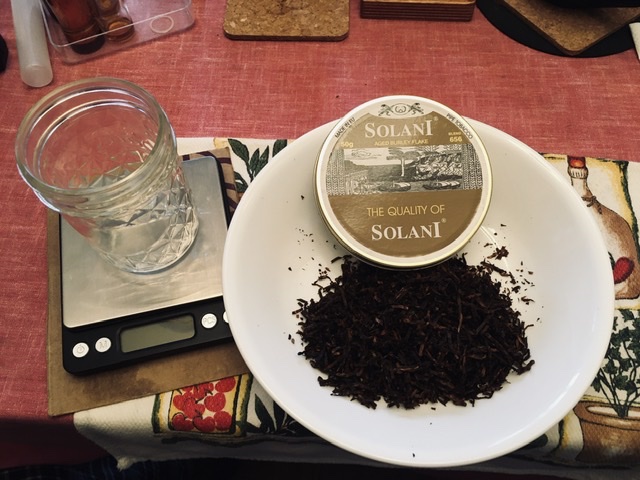
… now to choose what’s next in the jar! ![]()
@Kinnikinnick, @Skullblade789, @50YearsOfCigars, I don’t NET, but find this thread fascinating.

I read some good reviews about Picayune. I will try it next! Thanks for the suggestions!
It’s good stuff ![]() …don’t know where you’re reading reviews, but of course, one thing to think about…
…don’t know where you’re reading reviews, but of course, one thing to think about… ![]() Most of the reviews about tobacco are from actual folks that light fire to the stuff
Most of the reviews about tobacco are from actual folks that light fire to the stuff ![]() , inhale the burning leaf, and then give their options about their experience. That’s great and all (not)… Now, there’s a big difference between inhaling burning tobacco leaves and vaping the extraction of a leaf. What’s that difference, one might ask?
, inhale the burning leaf, and then give their options about their experience. That’s great and all (not)… Now, there’s a big difference between inhaling burning tobacco leaves and vaping the extraction of a leaf. What’s that difference, one might ask? ![]() I’ll tell you.
I’ll tell you.
One is, you’re not killing yourself slowly with every lung full of tar you intake into your body when you set fire to the leaf. I’ll elaborate on this if anyone can’t figure it out for themselves. ![]()
Next, we as NET vapers, can actually taste what the leaf actually tastes like, as it rolls across our tongue and wafts through our olfactory senses.
Point being… take tobacco reviews from tobacco smokers with a front end loaders worth salt. ![]() It tastes incredibly different as a vape… so, so, so much better than if you set fire to it. But, reading reviews from smokers is a good place to start.
It tastes incredibly different as a vape… so, so, so much better than if you set fire to it. But, reading reviews from smokers is a good place to start. ![]()
I do agree, tobacco never tasted so good until I started vaping it instead of smoking it! The Solani Aged Burley Flake was a suggestion by someone on reddit, I haven’t tried it yet. I have enough NET to last a while, so now I am letting them sit longer as advised by my fellow NET makers. I don’t get many opportunities to browse for good tobacco suggestions, been too busy. I buy about 3 small cans at a time and I will be placing an order soon. So far Picayune is the only one on the list.
Found another great tobacco for extraction: Barbary Coast ~ GL Pease
https://www.tobaccoreviews.com/blend/1425/g-l-pease-barbary-coast
Although I’m typically a non-aromatic tobacco fan… this one doesn’t reek of the casing flavor applied to the tobacco; Brandy, being the casing, is minimal at best. It is the awesome flavor of the tobacco itself (hints of black walnut, dark chocolate, and dried fruits), up front and center, which is stellar. 
I cellared quite a few GL Pease choices a while back… this is the first of the bunch; not disappointed! 
Decided to excavate this thread for those on the hunt for some good tobacco to macerate and filter into NET extracts.
Over time, I’ll mention some worthy tobaccos which I’ve come across since February '20; last post in this thread. Since then, I’ve run across a few tobaccos which are worth keeping in the rotation. And perhaps, there were some choices which shouldn’t have been made. Live and learn.
There will be some fresh (hopeful) buy postings, I’m sure; tobaccos which looked/sounded too good to pass by on the vendor site. Speaking of that scenario… I’ll kick it off:
I have high hopes for this one; fingers crossed.
Since it was a very limited production run, I was very lucky to snag a couple of tins, before the whole stock got snatched up by others. I was a bit taken aback, being stuck in an online cue, awaiting my chance to purchase this tobacco. This, after I had set an alarm for 6pm (start of the online tobacco sale) and immediately opened the website at that time; took about 30 minutes to be allowed onto the site. At least the site had an “auto-refresh” cycle. Otherwise, it would have been an unhappy buying experience. Within about 50 minutes 5000 tins were sold and the online shelves were stripped clean of Firebird!
Hey buddy. I wanted to share something for you to think about. I believe it’s really important, especially for those who struggle with extracting cigars and certain tobaccos that smell like hay. I’m new to this, but I’ve found in some YouTube videos that toasting tobacco in the oven gives it those very spicy notes we’re aiming for. So, I decided to test it myself. I took an Il Coloniale cigar (which barely had any smell) and toasted it. Oh my god, it smelled amazing! The same thing happened with Peter Stokkebye Luxury Bullseye Flake: initially, it smelled like raw hay, something reminiscent of tea, but definitely not tobacco. After toasting, its aroma transformed into that of a beautiful, dry, aromatic, richly smokable tobacco.
I’ll also include a link that can serve as food for thought.
https://pipesmagazine.com/forums/threads/stoving-tobacco-and-thoughts.103466/
Little package from CT today! ![]()
Leaf Only has always been my go-to for loose leaf; quality into the jar… quality out of the jar! 1/4lb sample offerings is a special thing; not many other vendors offer that option up front.
Planning on splitting this between jars for NET and the pressure cooker for some DIY Snus. Yummy!
A split between Burley and Rustica makes for some darn fine tasting Snus! The nic-kick is nothing to sneeze at either!
Missing hair on your chest? A batch of my Snus will cure that!
(Having just opened the ship box, I’m enjoying the fact, the tobacco barn smell in the house right now is delightfully, olfactory tinglingly wonderful!)
